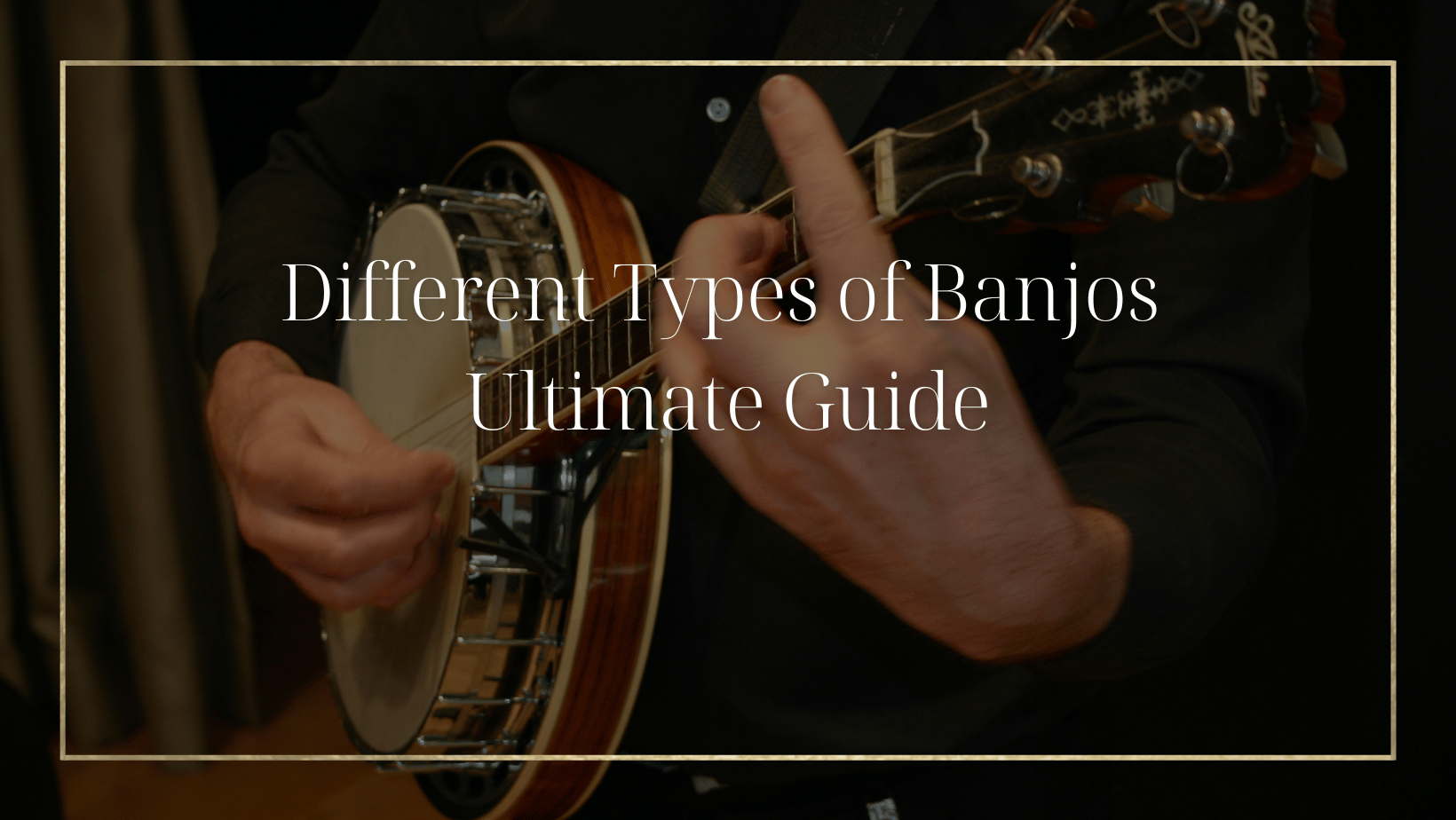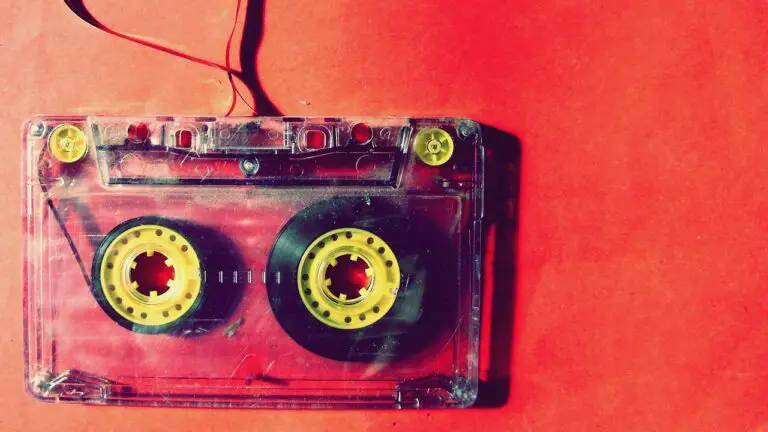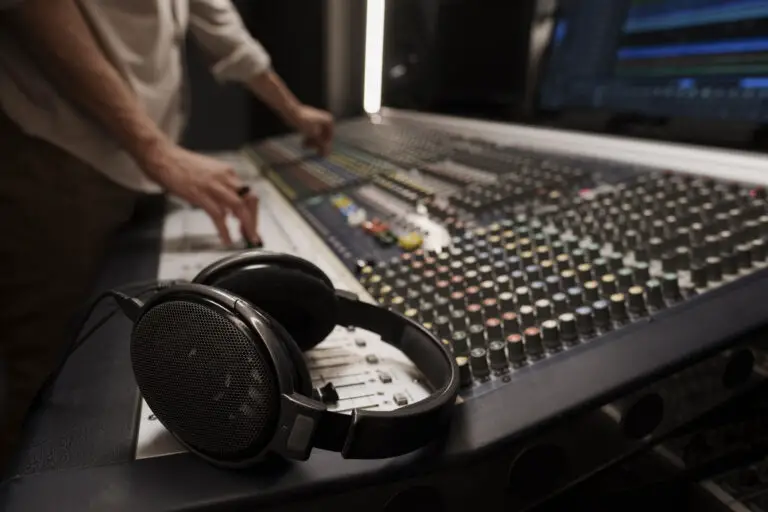What Are the Different Types of Banjos?
American Bluegrass, folk, Dixieland jazz, and old-time music all require different types of banjos to learn. However, once you start your journey, you must decide which type of banjo to buy.
Banjo players can choose various styles and techniques that suit their skills and experience. As a result, the banjo you purchase will significantly impact how you feel playing it, the sound you produce, and the kind of music you play.
To choose the ideal banjo for you, it is crucial to understand that the number of strings is only one of many considerations. In this article, you will learn about other essential elements, such as the parts of a banjo, the construction material and style, and modern banjos that are a fusion of banjo with other string instruments.
How Do You Sort The Different Types of Banjos?
Here are a few factors to consider when exploring different banjo types.
- Design
- Number of strings or frets
- Banjo head
- Modern & electric
- Hybrid (guitar & ukulele)
- Banjolin.
These are the most common ways to classify the various types of banjos. In this article, we’ll review each class individually and provide examples, so you know what to anticipate when buying.
Different Designs of Banjo
There are two major types of banjo design:
- Resonator
- Open-back
Most standard banjo designs come in open-back and resonator-equipped varieties.
Resonator banjo
A resonator banjo has a plate (or bowl) attached to the pot (the “pot” is the instrument’s back).
The banjo’s sound is amplified and given more forward projection using the resonator plate, helping it project. Many banjo players like banjos with resonators for live music.
The extra “bowl” also creates a twangy sound, which is why bluegrass players love it. The twang helps it compete with other instruments, acting as a natural amplifier.
Open-backed banjos might be preferred when there is no instrument to compete with.
Open-back
In calmer environments, the open-back banjo’s gentler tone is welcomed. Their straightforward construction makes these instruments lighter and cheaper than resonator-equipped alternatives.
The traditional banjo form produces a softer and more subtle tone. The sound of an open-back banjo originates from behind the player. So, the sound doesn’t bounce off the resonator plate (back toward the audience).
The Clawhammer playing style (using the back of your middle or index fingernail) is common on open-back 5-string banjos. This is because the strings are usually further from the fretboard in open-back banjos, making the clawhammer style more comfortable.
Different Types of Banjos Based on the Number of Strings
Over the years, many changes have been made to the banjo’s fundamental construction. Nonetheless, a banjo can be broken down into the following categories by its number of strings.
4-String Banjo
The four-string banjo is ideal for those who wish to perform rhythmic and upbeat music. This banjo was formerly the standard for many genres, including traditional Dixieland Jazz, Irish, bluegrass, and classical. With 4 strings, this version is typically easier to learn.
Two tenors, like a viola and mandolin, or an Irish tenor, like a violin and mandolin, are used for tuning a four-string banjo. In most cases, the volume is reduced, and the pitch is lowered by around an octave.
Four String – Plectrum Banjos
The plectrum banjo is a four-string instrument with 22 frets and a drop-C (or C, G, B, D) tuning. Being longer than the majority of 4-string banjos, it’s about the same length as a 5-string banjo.
The plectrum banjo is often played similarly to a ukulele with a strumming action. Chicago tuning (D, G, B, and E) is another option for the banjo, making it easier for guitarists to pick up and use in their music.
The classic image of banjo players in straw hats typically uses plectrum banjos (see above). You can find these banjos in the bluegrass music from theme parks like Disneyland.
Jazz-era dance bands of the 1920s and 1930s also used plectrum banjos. For example, you can find one in the Louis Armstrong Hot Five in the below video:
The Four-String 17-Fret Tenor Banjos
A 17-fret banjo is an ideal instrument for playing Irish music. Tenors with 17 frets are the shortest option, with a scale length of only 20 to 21 inches.
These banjos are more commonly available than any other banjo style and can be found almost anywhere. These banjo’s adaptability levels can be attributed to the adaptability of strings.
The 17-fret can be tuned and strung similarly to perform Celtic and Dixieland music.
The primary distinction between tenor banjos with 17 and 19 frets is the scale length and fret count.
Many people associate the Irish tenor banjo with a 17-fret instrument tuned in the keys of G, D, A, and E from the fourth to the first string. They may sound like a fiddle or mandolin if you successfully tune the banjo.
Traditional Celtic and Irish music and early Jazz, such as dance hall pieces, Dixieland, Ragtime, and Tin Pan Alley, all feature tenor banjos.
5-String Banjos
Banjo strings don’t follow the standard pattern of going from lowest to highest down the instrument’s neck. Instead, they are ranked as an alternative: fourth, third, second, first, and fifth.
For example, the drone-making fifth string is linked to a tuner at the fifth fret of the neck; it is thus just three-quarters of the remaining full-length strings. Typically, its gauge will match that of the first string.
A particular fifth-string capo can adjust a drone string’s tune to a greater extent than the two semitones provided by the tuner. For example, open-G (G-B-G-B-D) is the most popular tuning for 5-string banjos used in bluegrass, but numerous others exist.
Double-C (G-C-G-C-D) and open-D (F#-D-F#-A-D) are two of the various tuning variations utilized in traditional music. These tunings have commonly raised a tone using a capo or higher pitch string tuning.
Bluegrass and Country musicians frequently use 5-string banjos because they sound lovely when played in a style pioneered by Earl Scruggs.
Five-String Long Neck Banjos
Compared to standard five-string models, long-necked banjos have an extra three frets available. Long neck banjos, often known as “big daddy” banjos, include 25 frets (three more than regular banjos) and are typically tuned to the key of E.
Banjos with a long neck can be played with either nylon or gut strings, making them accessible to old-time musicians. This banjo will provide the results they’re searching for and can accommodate any musician.
The unique feature of this banjo style is that you can utilize the same chord forms as on a five-string with 22 frets, except that you can play the low E tones. You can also play a long-neck instrument on the G chord.
Five-String Parlor Banjos
Parlor banjos are a shorter five-string instrument set to an open G chord with 19 frets. It allows for the same volume with less instrument length. They’re great for kids and people with smaller frames because they are compact.
Fewer frets mean that it’s easier to reach (and play). But, you also have less of a range without the additional frets.
Consider that a resonator and tone ring can be necessary for parlor banjos. Likewise, a resonator back is required when playing bluegrass, but an open back is preferred with less twangy music.
Six-string Banjos
The six-string banjo is the finest choice for guitarists who want to expand their musical horizons. It is a lot of fun to play, and easier to pick up if you already have guitar experience.
Guitars have six strings, so six-string banjos follow similar tunings and techniques. This is why you might hear it’s nickname: “Banjitar.”
It was popular in jazz and rumored to be used by Jean Reinhardt. However, some people speculate he was using a Zither banjo.
12-string Banjos
The 12-string is for players with expertise in the banjo. It is played and tuned similarly to a guitar, producing a uniquely delicate, lacy, jangly sound. The unique 12-string banjo can be heard in folk, bluegrass, and some rock songs.
Much like dual-neck guitars, it’s a very niche instrument
What are Different Kinds of Banjo Heads?
Banjo heads, or the “face” of the banjo below the string, affect how the banjo sounds. There are a bunch of different factors when it comes to banjo heads.
Most musicians use mylar (plastic) heads, which look like drum heads but resist variations in weather and humidity. Calfskin is favored by some musicians due to its smoother tone.
Players must also be concerned with the head’s thickness, which gives the banjo distinctive tones. The banjo’s tone is warmed and provides more bass when the mylar plastic is thicker. Some standard banjo head thicknesses are listed below.
The most common is an 11-inch head with average thicknesses between .007 and .009.
Below are other variations on banjo heads:
Top Frosted Head
Frosted tops have a good sustain balance and help produce bright tones. It’s most popular for five-string banjos and resonators.
Bottom Frosted Head
It is preferred by flat-picking musicians, such as tenor and plectrum players, because of its smooth finish, reducing noise during strumming. These heads have more sustain than the frosted top options.
Prism Head
This banjo head looks like a prism because of its glossy, colorful, mirror-like smooth surface. It’s popular for more unusual banjos, like electric ones. Because of this, it focuses on bright and sharp tones.
Clear Head
People with gold-plated hardware or stained resonator interiors prefer this head because it is transparent and allows them to see the details. It offers a warm, unique tone with a long sustain and slightly less bass response than the frosted head at the bottom.
Black Head
The thicker mylar membrane gives black heads a mellower tone and longer sustain. Large amounts of bass are produced, but the sound is more complex than with a frosted bottom or clear head.
Fiberskyn Head
Fiberskyn’s head looks similar to the old calfskin heads. It provides a beautiful, old-timey tone that’s warm and round from the banjo. When played with a clawhammer, the banjo produces fascinating sounds.
Renaissance Head
This Renaissance head banjo has a smooth top and an opaque hue of genuine beeswax, making it a bit lighter than a Fiberskyn head. One more of the clawhammer player’s go-to tunes.
Kevlar Head
This thick, kevlar head emphasizes the high frequencies. Its surface has the feel of orange peel with a primarily white color. Many musicians find the crisp, long-lasting head fascinating. It produces a robust, sugary tone on a six-string banjo.
Despite the name, I can’t recommend you use it to stop bullets.
Other Banjo Categories Worth Noting
Since music is about evolving new beats and tunes, banjo lovers try to explore new sounds by fusing other instruments with the banjo, such as guitars and ukuleles. Some other types of modernized banjos are given below:
Modern & Electric
Like electric guitars in design, the electric banjo’s principal benefit is the sheer variety of tones you can achieve.
In contrast, these banjos can also be played acoustically and sound as excellent as when plugged into an amp.
Hybrid (Guitar & Ukulele)
The 6-string banjo of today is what you might expect: a guitar that mimics the sound of a banjo. Unfortunately, however, this banjo style is long gone.
Six-string banjos, which banjo purists believe are not banjos, are frequently ignored and even despised by them.
A few hybrid banjos are now combine conventional banjo features with electric guitar ones. Their bodies, which may look like electric guitars, are carved out of a single piece of wood and outfitted with electronic pickups so that the instrument can pick up the sound of the player’s head as it shakes.
You may plug one of these electric banjos into any regular guitar amp and use it with your favorite rock band without worrying about feedback.
Banjolele
The banjolele is a cross between a ukulele and a miniature banjo, providing portability and ease of learning a ukulele and, at the same time, also sounding like a banjo.
Four nylon strings on a ukelele banjo are tuned to C, G, E, or an octave higher, with 12 frets. Banjoleles are a great addition to smaller acoustic groups because of their four strings, smaller neck, and shorter diameter head.
You strum the chords for background music to accompany singing, and the sound is solid and loud. The Uke banjo, made famous by major music hall star George Formby, is frequently employed in traditional English and Celtic music.
● Banjolin
Banjolins, sometimes known as mandolin banjos, are 8-string instruments with a compact body and a 6 to 10 inches head size. It is comparable to the mandolin, which has violin-like tones and is around the size of a Uke banjo.
Mandolins are frequently heard in bluegrass bands. In addition, modern artists use banjolin, such as Soundgarden, The Lumineers, Grateful Dead, Mumford and Sons, Punch Brothers, REM, The White Stripes, Rod Stewart, Led Zeppelin, and Nickel Creek.






